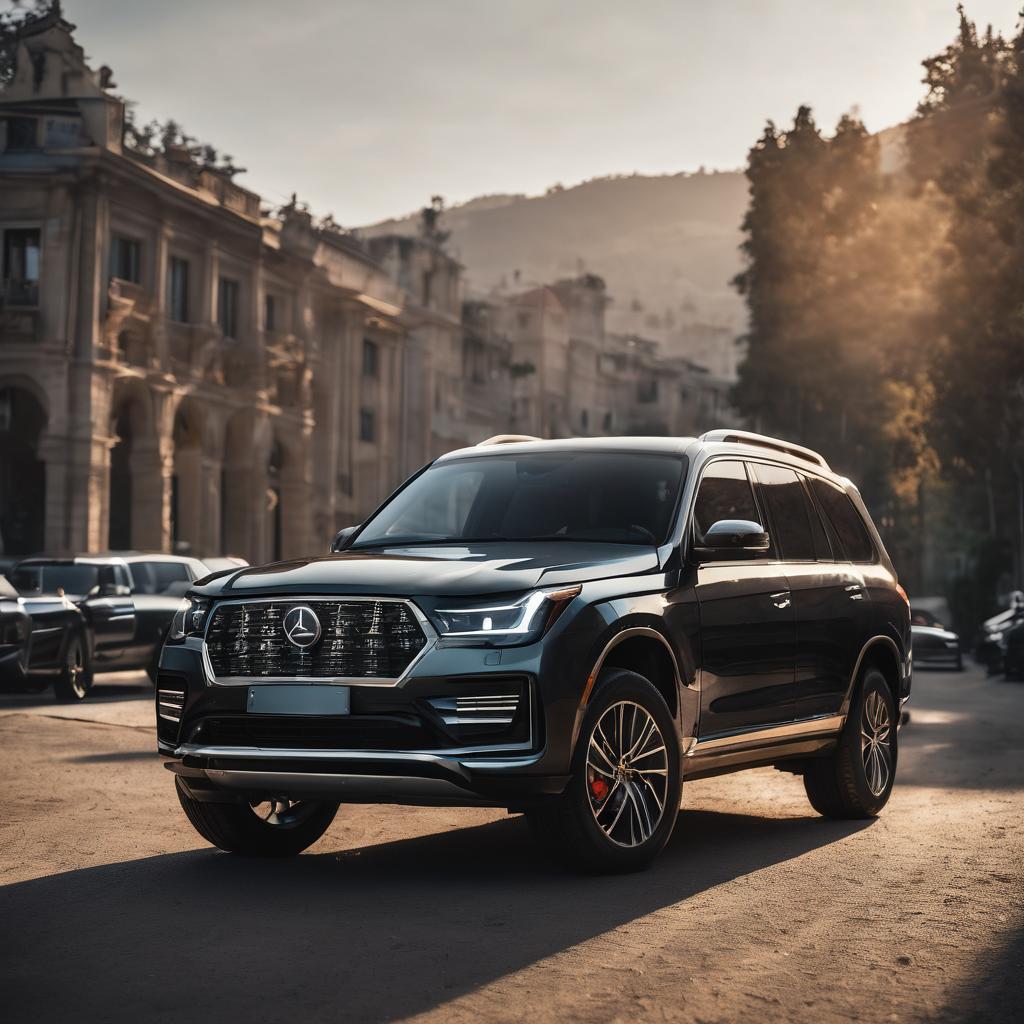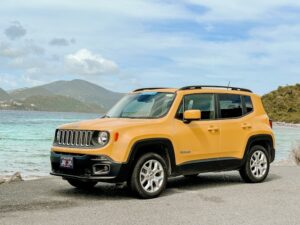
SUV Cars
Contents
- 1 Heading 1: Understanding the Capabilities of SUVs for Off-Roading
- 2 Heading 2: Exploring the Various Types of SUVs in the Market
- 3 Heading 3: Key Features to Look for in an SUV for Off-Roading Purposes
- 4 Heading 4: Examining the Ground Clearance and Suspension of SUVs
- 5 Heading 5: Evaluating the Engine Power and Torque for Off-Roading
- 6 Heading 6: Assessing the Traction Control and All-Wheel Drive Systems
- 7 Heading 7: Analyzing the Braking and Stability Control Systems of SUVs
- 8 Heading 8: Considering the Size and Weight of SUVs for Off-Roading
- 9 Heading 9: Looking at the Approach, Departure, and Breakover Angles
- 10 Heading 10: Real-Life Examples of SUV Models Suitable for Off-Roading
Heading 1: Understanding the Capabilities of SUVs for Off-Roading
SUVs, short for Sports Utility Vehicles, have gained immense popularity in recent years due to their versatile nature and durability. These vehicles are designed to handle various terrains, making them suitable for off-roading adventures. Understanding the capabilities of SUVs for off-roading is essential before embarking on any adventurous journey.
One of the primary reasons SUVs are well-suited for off-roading is their high ground clearance. This feature allows the vehicle to navigate over uneven surfaces, rocks, and other obstacles without causing damage to the undercarriage. Additionally, SUVs are equipped with robust suspension systems that provide stability and control while driving on rough terrains, ensuring a smooth and comfortable ride for passengers. These capabilities make SUVs the preferred choice for those seeking thrilling off-road experiences.
Heading 2: Exploring the Various Types of SUVs in the Market
When it comes to exploring the various types of SUVs available in the market, it’s important to understand the wide range of options you have at your disposal. SUVs come in different sizes, from compact crossovers to full-size models, catering to different needs and preferences. Compact SUVs are ideal for urban commuting and offer better fuel efficiency, while mid-size and full-size SUVs provide more space for passengers and cargo, making them suitable for long trips and family outings.
Furthermore, SUVs are also available in different drivetrain options, including front-wheel drive, rear-wheel drive, and all-wheel drive. Front-wheel drive SUVs provide excellent traction in normal road conditions and are more fuel-efficient, while rear-wheel drive SUVs offer better handling and performance. All-wheel drive SUVs, on the other hand, provide enhanced traction and stability on various terrains, making them a top choice for off-roading enthusiasts. Understanding these different types and drivetrain options is crucial in finding the SUV that aligns with your specific needs and lifestyle.
Heading 3: Key Features to Look for in an SUV for Off-Roading Purposes
When it comes to choosing an SUV for off-roading purposes, there are several key features that you should look for to ensure a capable and enjoyable experience. First and foremost, a robust four-wheel drive system is essential. This system allows power to be distributed to all four wheels, providing enhanced traction and control on rough terrains. Additionally, look for an SUV with a selectable low-range gearbox, which provides extra torque and control when navigating challenging off-road conditions.
Another important feature to consider is the ground clearance of the SUV. A higher ground clearance allows the vehicle to clear obstacles and traverse uneven surfaces without getting grounded. Similarly, a sturdy suspension system is crucial for off-roading. Look for an SUV with a suspension that can absorb shocks and bumps, ensuring a smooth ride even on rugged terrains. By prioritizing these key features, you can select an SUV that will handle off-roading challenges with ease and offer a thrilling adventure for you and your fellow adventurers.
Heading 4: Examining the Ground Clearance and Suspension of SUVs
Having adequate ground clearance and a robust suspension system is crucial for an SUV when venturing off the beaten path. SUVs designed for off-roading are equipped with higher ground clearance compared to regular passenger vehicles. This increased ground clearance allows them to navigate rough terrains and obstacles more effectively, preventing any potential damage to the undercarriage. It also prevents the SUV from getting stuck or bottoming out in challenging off-road conditions.
In addition to ground clearance, a durable suspension system is essential for off-roading. The suspension system helps absorb shocks and bumps while ensuring proper traction and stability. SUVs intended for off-road adventures often feature reinforced suspensions with unique components such as long-travel shocks, heavy-duty springs, and adjustable dampers. These advanced suspension systems can withstand the demands of rough terrains, providing a comfortable and controlled ride for both the driver and passengers.
Heading 5: Evaluating the Engine Power and Torque for Off-Roading
When it comes to off-roading, having sufficient engine power and torque is crucial. The engine power determines the ability of the SUV to tackle steep inclines and rough terrains, while torque provides the necessary force to overcome obstacles such as rocks or mud. The general rule of thumb is that higher horsepower and torque ratings translate into better off-roading performance.
It is important to consider the specific needs and requirements of your off-roading adventures when evaluating engine power and torque. For instance, if you plan on traversing challenging terrains with steep gradients, a higher horsepower rating will provide the necessary power to climb those inclines effortlessly. Similarly, a higher torque rating will ensure that the SUV can deliver the required force to overcome obstacles encountered on the off-road trails.
Heading 6: Assessing the Traction Control and All-Wheel Drive Systems
When it comes to off-roading, the traction control and all-wheel drive systems play a vital role in ensuring a vehicle’s capability on various terrains. Traction control helps prevent wheel slip by modulating the power distribution to each wheel, thereby maximizing grip and maintaining control. This feature is especially important when driving on loose or slippery surfaces such as mud or snow. On the other hand, all-wheel drive systems provide power to all four wheels simultaneously, offering improved traction and stability. By distributing torque to the wheels with the most grip, all-wheel drive systems enhance a vehicle’s ability to conquer challenging off-road conditions.
Different SUV models come equipped with varying traction control and all-wheel drive technologies. Some vehicles offer full-time all-wheel drive, where power is sent to all four wheels at all times. This system is particularly advantageous for off-roading, as it enhances traction and provides more responsive control. Other SUVs may feature selectable all-wheel drive, allowing drivers to manually engage or disengage the system as per their requirements. Additionally, certain SUVs offer advanced traction control systems with multiple settings, enabling drivers to optimize traction based on specific off-road situations. Overall, the traction control and all-wheel drive systems are crucial elements to consider when evaluating the off-roading capabilities of an SUV.
Heading 7: Analyzing the Braking and Stability Control Systems of SUVs
When it comes to off-roading, the braking and stability control systems of an SUV play a crucial role in ensuring safe and controlled maneuvers on uneven terrain. These systems are designed to prevent wheel locking and skidding, allowing drivers to maintain stability and control even in challenging conditions. The braking system of an off-road SUV is typically equipped with features such as anti-lock braking system (ABS) and electronic brakeforce distribution (EBD) to distribute brake force to the wheels more effectively. These systems work together to provide shorter stopping distances and improved control during braking. Additionally, stability control systems, such as electronic stability control (ESC) and traction control, actively monitor the vehicle’s dynamics and intervene when necessary to prevent loss of control and aid in maintaining stability. A well-designed and responsive braking and stability control system is vital in ensuring a safe and enjoyable off-roading experience.
Heading 8: Considering the Size and Weight of SUVs for Off-Roading
When it comes to off-roading, considering the size and weight of SUVs is crucial. The size of an SUV directly affects its maneuverability and agility on challenging terrains. In general, smaller SUVs tend to be more nimble and easier to navigate through tight spaces, while larger SUVs offer more interior space and cargo capacity. However, it’s important to strike a balance between size and capability, as a vehicle that is too large may struggle to fit through narrow trails or overcome obstacles. On the other hand, a vehicle that is too small may lack the power and stability needed for off-roading adventures.
Weight is another essential factor to take into account when choosing an SUV for off-roading purposes. Generally, lighter SUVs have an advantage in terms of fuel efficiency and speed, making them more agile and capable of tackling rough terrains. However, heavier SUVs often have better stability and can handle larger payloads, which can be beneficial when venturing into remote areas or carrying additional equipment. Striking the right balance between size and weight is essential to ensure the ideal combination of strength, maneuverability, and reliability when exploring off-road trails.
Heading 9: Looking at the Approach, Departure, and Breakover Angles
When it comes to off-roading, one crucial aspect to consider in an SUV is its approach, departure, and breakover angles. These angles determine the vehicle’s ability to tackle obstacles without causing damage to the underbody or becoming stuck. The approach angle refers to the steepest incline an SUV can approach without impacting its front bumper, while the departure angle indicates the steepest decline it can descend without hitting its rear bumper. On the other hand, the breakover angle measures the vehicle’s capability to navigate steep crests or uneven terrain without getting high-centered.
Typically, off-road enthusiasts seek SUVs with generous approach, departure, and breakover angles to ensure optimal clearance over obstacles. An SUV with higher angles can easily negotiate challenging trails without compromising its structural integrity. These angles are influenced by various factors, including the design of the vehicle’s front and rear bumpers, suspension setup, and the length between the wheels. Hence, when selecting an SUV for off-roading, it is crucial to consider not only its power and capability but also its ability to traverse uneven and rugged terrains safely.
Heading 10: Real-Life Examples of SUV Models Suitable for Off-Roading
When it comes to off-roading, there are several SUV models that stand out for their exceptional capabilities. One prime example is the Jeep Wrangler. Known for its ruggedness and durability, the Wrangler is equipped with a robust suspension system, high ground clearance, and an advanced 4WD system. Its strong build and impressive approach and departure angles allow it to navigate even the toughest terrains with ease. Another notable contender is the Toyota 4Runner. With its powerful V6 engine, reinforced body-on-frame construction, and advanced off-road technologies like Crawl Control and Multi-Terrain Select, the 4Runner offers exceptional traction and control on challenging surfaces. Additionally, the Land Rover Defender, a legendary off-roader, is renowned for its exceptional off-road prowess, thanks to its advanced drivetrain options, adjustable air suspension, and Terrain Response system. These are just a few examples of SUV models that are specifically designed to conquer the off-road terrain and provide a thrilling adventure for off-roading enthusiasts.
In addition to the aforementioned models, there are other SUVs that excel in off-roading capabilities. The Ford Bronco, a highly anticipated newcomer, boasts an impressive combination of powerful engines, off-road-specific features, and advanced trail technologies. Its G.O.A.T (Goes Over Any Terrain) Modes allow drivers to choose from various driving modes optimized for different terrains, ensuring optimal performance in any off-road situation. The Chevrolet Tahoe Z71 is another SUV worth mentioning, with its robust suspension, skid plates, and off-road-specific tires that enhance its off-road capabilities. Additionally, the Land Rover Discovery offers exceptional off-roading prowess, thanks to its Terrain Response 2 system, adjustable air suspension, and advanced traction control technologies. These SUV models serve as a testament to the increasing focus on off-road capabilities in modern SUV designs, providing enthusiasts with a wide range of options to choose from.






